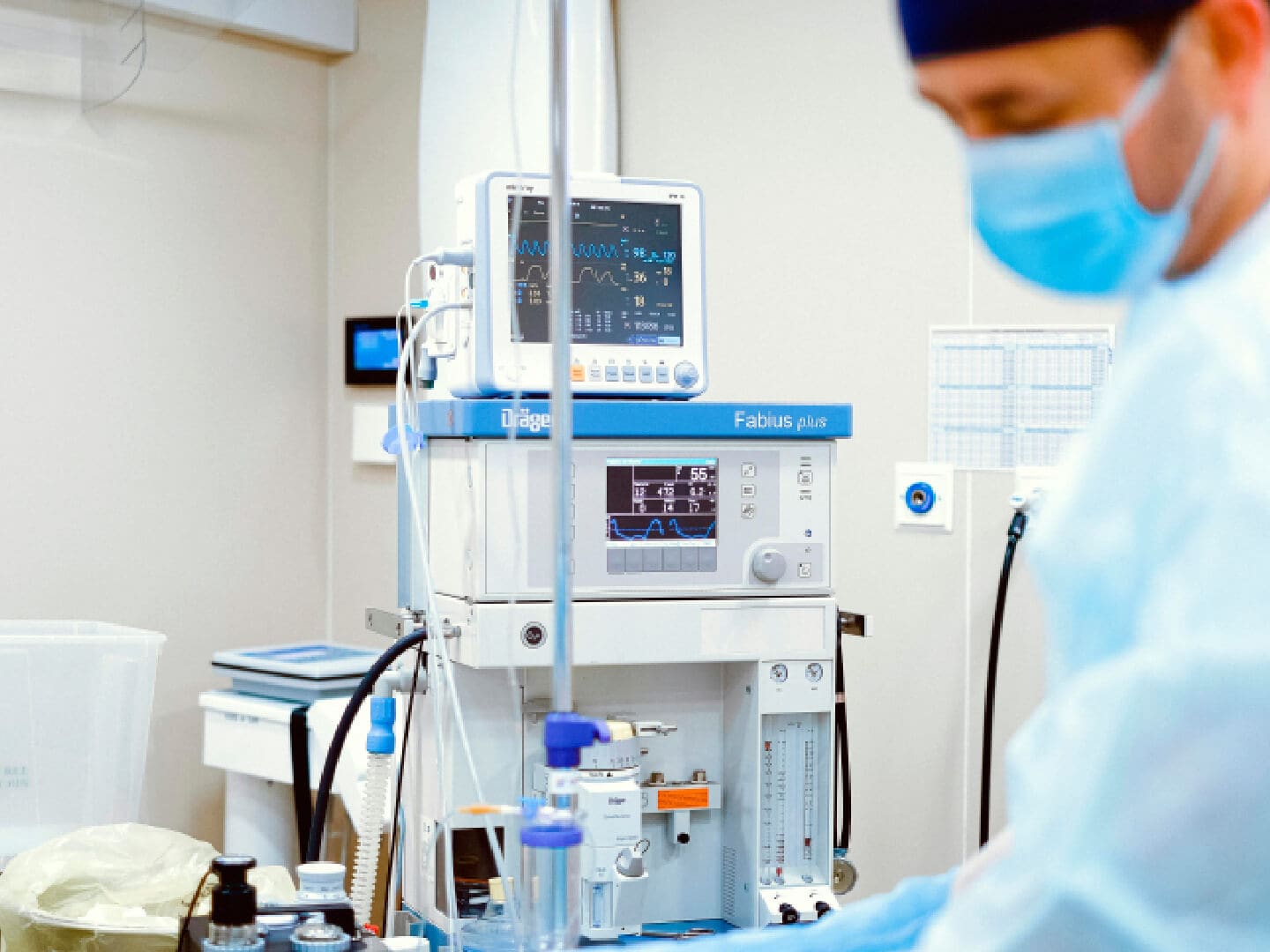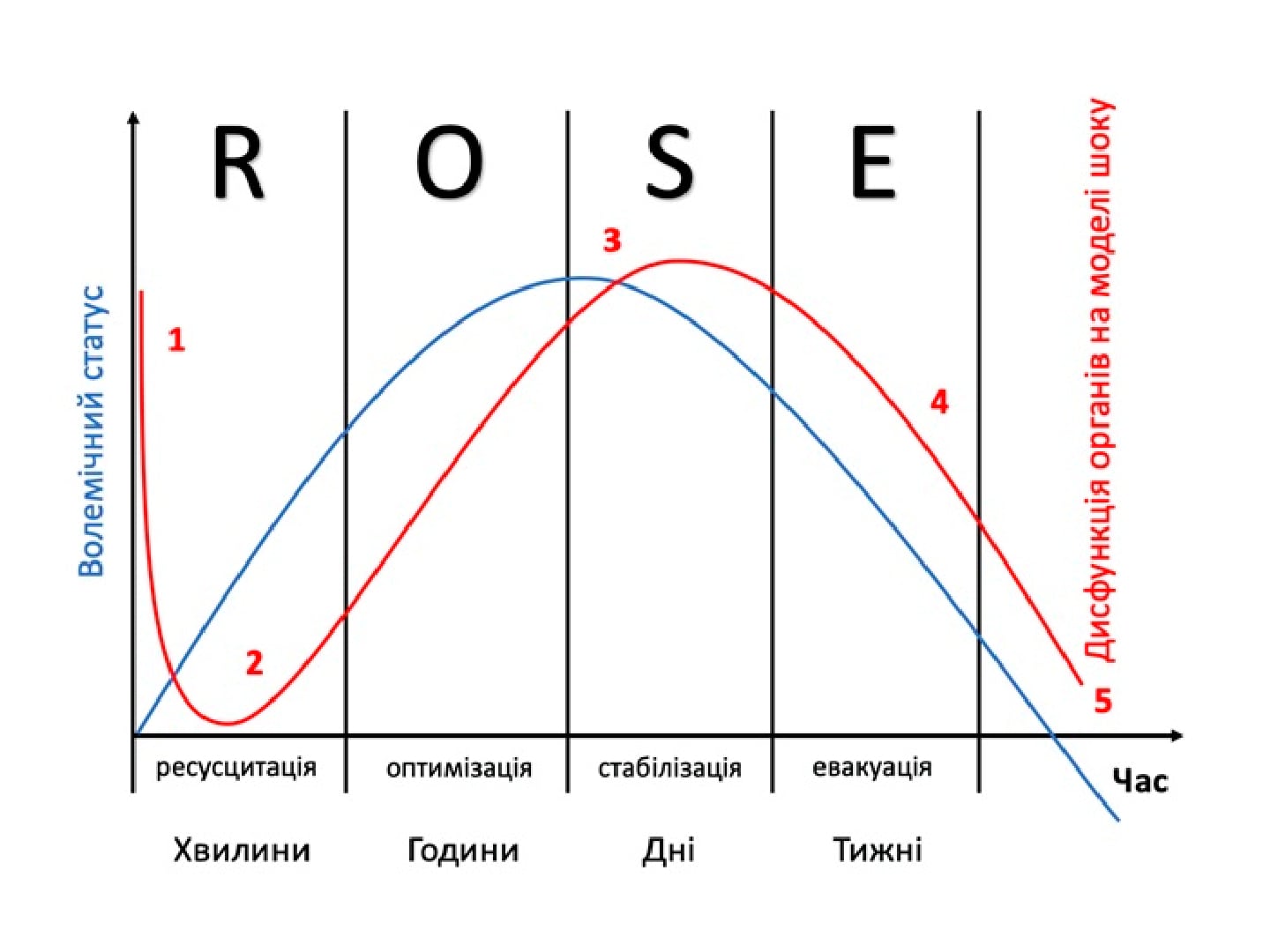Дексмедетомидин для седации в интенсивной терапии (обзор литературы и клинический опыт)
Резюме. Дексмедетомидин — довольно новый и перспективный препарат для использования в интенсивной терапии и при оперативных вмешательствах. Учитывая то, что он является агонистом альфа-2-адренорецепторов, дексмедетомидин имеет анальгетический, седативный эффект и влияет на показатели гемодинамики. Благодаря тому, что дексмедетомидин не обладает способностью подавлять дыхание, он может использоваться у пациентов с нарушением дыхания. Дексмедетомидин имеет минимальное количество побочных эффектов и широкий спектр использования.
Ключевые слова: дексмедетомидин, седация, боль, интенсивная терапия, сон, делирий.
Авторы:
Дмитриев Д. В., Бортник Д. И., Рудницкий Ю. В., Геранин С. В., Коренчук Н. И., КНП “Винницкий областной клинический высокоспециализированный эндокринологический центр”
Литература:
- Maze M, Angst MS. Dexmedetomidine and Opioid Interactions: Defining the Role of Dexmedetomidine for Intensive Care Unit Se-dation. Anesthesiology [Internet]. Ovid Technologies (Wolters Klu-wer Health); 2004 nov;101(5):1059–61. Available from: http:// dx.doi.org/10.1097/00000542–200411000–00002
- Nelson LE, Lu J, Guo T, Saper CB, Franks nP, Maze M. The 2-Ad-renoceptor Agonist Dexmedetomidine Converges on an Endog-enous Sleep-promoting Pathway to Exert Its Sedative Effects. Anesthesiology [Internet]. Ovid Technologies (Wolters Kluwer Health); 2003 Feb;98(2):428–36. Available from: http://doi. org/10.1097/00000542–200302000–00024
- Venn RM, Bradshaw CJ, Spencer R, Brealey D, Caudwell E, naugh-ton C, et al. Preliminary UK experience of dexmedetomidine, a novel agent for postoperative sedation in the intensive care unit. Anaesthesia [Internet]. Wiley; 1999 Dec;54(12):1136–42. Avail-able from: http://doi.org/10.1046/j.1365–2044.1999.01114.x
- Angst MS, Ramaswamy B, Davies MF, Maze M. Comparative Analgesic and Mental Effects of Increasing Plasma Concen-trations of Dexmedetomidine and Alfentanil in Humans. An-esthesiology [Internet]. Ovid Technologies (Wolters Kluwer Health); 2004 Sep;101(3):744–52. Available from: http://doi. org/10.1097/00000542–200409000–00024
- Cortinez LI, Hsu Y-W, Sum-Ping ST, Young C, Keifer JC, Ma-cLeod D, et al. Dexmedetomidine Pharmacodynamics: Part II. Anesthesiology [Internet]. Ovid Technologies (Wolters Kluwer Health); 2004 nov;101(5):1077–83. Available from: http://doi. org/10.1097/00000542–200411000–00006
- Ebert TJ, Hall JE, Barney JA, Uhrich TD, Colinco MD. The Effects of Increasing Plasma Concentrations of Dexmedetomidine in Hu-mans. Anesthesiology [Internet]. Ovid Technologies (Wolters Klu-wer Health); 2000 Aug;93(2):382–94. Available from: http://doi. org/10.1097/00000542–200008000–00016
- Arain SR, Ruehlow RM, Uhrich TD, Ebert TJ. The Efficacy of Dex-medetomidine Versus Morphine for Postoperative Analgesia After Major Inpatient Surgery. Anesthesia & Analgesia [Internet]. Ovid Technologies (Wolters Kluwer Health); 2004 Jan;153–8. Available from: http://doi.org/10.1213/01.ane.0000093225.39866.75
- Aryan HE, Box KW, Ibrahim D, Desiraju U, Ames CP. Safety and ef-ficacy of dexmedetomidine in neurosurgical patients. Brain Injury [Internet]. Informa UK Limited; 2006 Jan;20(8):791–8. Available from: http://doi.org/10.1080/02699050600789447
- Zornow MH, Scheller MS, Sheehan PB et al. Intracranial pres-sure effects ofdexmedetomidine in rabbits. Anesth. Analg. 1992;75:232—237.
- Farag E, Argalious M, Sessler DI, et al. Use of alpha(2)-agonists in neuroanesthesia: An overview. Ochsner J. 2011;11(1):57—69.
- Huupponen E, Maksimow A, Lapinlampi P, Srkel M, Saas-tamoinen A, Snapir A, et al. Electroencephalogram spindle ac-tivity during dexmedetomidine sedation and physiological sleep. Acta Anaesthesiologica Scandinavica [Internet]. Wiley; 2008 Feb;52(2):289–94. Available from: http://doi.org/10.1111/ j.1399–6576.2007.01537.x
- Paris A, Tonner PH Dexmedetomidine in anaesthesia. Curr. Opin. Anaesthesiol 2 005;18:412—418.
- Engelhard K, Werner C, Eberspcher E, Bachl M, Blobner M, Hildt E, et al. The Effect of the 2-Agonist Dexmedetomidine and the n-Methyl-d-Aspartate Antagonist S(+)-Ketamine on the Expression of Apoptosis-Regulating Proteins After Incom-plete Cerebral Ischemia and Reperfusion in Rats. Anesthe-sia & Analgesia [Internet]. Ovid Technologies (Wolters Kluwer Health); 2003 Feb;96(2):524–31. Available from: http://doi. org/10.1213/00000539–200302000–00041
- Frlich MA, Arabshahi A, Katholi C, Prasain J, Barnes S. Hemody-namic characteristics of midazolam, propofol, and dexmedetomi-dine in healthy volunteers. Journal of Clinical Anesthesia [Inter-net]. Elsevier BV; 2011 May;23(3):218–23. Available from: http:// doi.org/10.1016/j.jclinane.2010.09.006
- Bloor BC, Ward DS, Belleville JP, Maze M. Effects of Intravenous Dexmedetomidine in Humans. Anesthesiology [Internet]. Ovid Technologies (Wolters Kluwer Health); 1992 Dec;77(6):1134–42. Available from: http://doi.org/10.1097/00000542–199212000– 00014
- Ebert TJ, Hall JE, Barney JA, et al. The effects of increasing plas-ma concentrations of dexmedetomidineinhumans. Anesthesiology 2000;93:382—394.
- E. Ramsay MA, Luterman DL. Dexmedetomidine as a Total Intrave-nous Anesthetic Agent. Anesthesiology [Internet]. Ovid Technolo-gies (Wolters Kluwer Health); 2004 Sep;101(3):787–90. Available from: http://doi.org/10.1097/00000542–200409000–00028
- Scholz J, Tonner PH Alpha2-adrenoceptor agonists in anaesthesia: a new paradigm. Curr. Opin. Anaesthesiol. 2000;13:437—442.
- Precedex (dexmedetomidine hydrochloride) injection. For intra-venous use. — Prescribing information. LakeForest, IL, USA: Hos-piraInc. 2011.
- Farag E, Argalious M, Sessler DI, et al. Use of alpha(2)-agonists in neuroanesthesia: An overview. Ochsner J. 2011; 11 (1): 57—69.
- Jakob SM. Dexmedetomidine vs Midazolam or Propofol for Seda-tion During Prolonged Mechanical Ventilation. JAMA [Internet]. American Medical Association (AMA); 2012 Mar 21;307(11):1151. Available from: http://doi.org/10.1001/jama.2012.304
- Klamt JG, de Andrade Vicente WV et al. Effects of dexmedetomi-dine-fentanyl infusion on blood pressure and heart rate during cardiac surgery in children. Anаesthesiol. Res. Pract. 2010.
- Wijeysundera Dn, naik JS, Scott Beattie W. Alpha-2 adrenergic agonists to prevent perioperative cardiovascular complications: The American Journal of Medicine [Internet]. Elsevier BV; 2003 Jun;114(9):742–52. Available from: http://doi.org/10.1016/ s0002–9343(03)00165–7
- Jaionen J, Hynynen M, Kuitunen A, Heikkila H, Perttila J, Salmen-pera M, et al. Dexmedetomidine as an Anesthetic Adjunct in Cor-onary Artery Bypass Grafting. Anesthesiology [Internet]. Ovid Technologies (Wolters Kluwer Health); 1997 Feb;86(2):331–45. Available from: http://doi.org/10.1097/00000542–199702000– 00009
- Hofer RE, Sprung J, Sarr MG, Wedel DJ. Anesthesia for a patient with morbid obesity using dexmedetomidine without narcotics. Canadi-an Journal of Anesthesia/Journal canadien d’anesthsie [Internet]. Springer Science and Business Media LLC; 2005 Feb;52(2):176– 80. Available from: http://doi.org/10.1007/bf03027725
- Abdelmalak B, Makary L, Hoban J, Doyle DJ. Dexmedetomidine as sole sedative for awake intubation in management of the crit-ical airway. Journal of Clinical Anesthesia [Internet]. Elsevier BV; 2007 Aug;19(5):370–3. Available from: http://doi.org/10.1016/j. jclinane.2006.09.006
- Koroglu A, Demirbilek S, Teksan H, Sagır O, But AK, Ersoy MO. Sedative, haemodynamic and respiratory effects of dexmedetomi-dine in children undergoing magnetic resonance imaging examina-tion: preliminary results. British Journal of Anaesthesia [Internet]. Elsevier BV; 2005 Jun;94(6):821–4. Available from: http://doi. org/10.1093/bja/aei119
- Meng Q, Xia Z, Luo T, Wu Y, Tang L, Zhao B, et al. Dexmedetomidine reduces emergence agitation after tonsillectomy in children by sevoflurane anesthesia: A case-control study. International Jour-nal of Pediatric Otorhinolaryngology [Internet]. Elsevier BV; 2012 Jul;76(7):1036–41. Available from: http://doi.org/10.1016/j. ijporl.2012.03.028
- Greenberg JW, Lancaster TS, Schuessler RB, Melby SJ. Postop-erative atrial fibrillation following cardiac surgery: a persistent complication. European Journal of Cardio-Thoracic Surgery [Inter-net]. Oxford University Press (OUP); 2017 Mar 27;52(4):665–72. Available from: http://doi.org/10.1093/ejcts/ezx039
- Almassi GH, Schowalter T, nicolosi AC, Aggarwal A, Moritz TE, Henderson WG, et al. Atrial Fibrillation After Cardiac Surgery. Annals of Surgery [Internet]. Ovid Technologies (Wolters Kluw-er Health); 1997 Oct;226(4):501–13. Available from: http://doi. org/10.1097/00000658–199710000–00011
- Liu X, Zhang K, Wang W, Xie G, Fang X. Dexmedetomidine sedation reduces atrial fibrillation after cardiac surgery compared to propo-fol: a randomized controlled trial. Critical Care [Internet]. Springer Science and Business Media LLC; 2016 Sep 21;20(1). Available from: http://doi.org/10.1186/s13054–016–1480–5
- Turan A, Bashour CA, You J, Kirkova Y, Kurz A, Sessler DI, et al. Dexmedetomidine sedation after cardiac surgery decreases atrial arrhythmias. Journal of Clinical Anesthesia [Internet]. Elsevier BV; 2014 Dec;26(8):634–42. Available from: http://doi.org/10.1016/j. jclinane.2014.05.009
- Yang Liu1, Lei Zhang2, Suozhu Wang1, Feiping Lu1, Jie Zhen1, Wei Chen. Dexmedetomidine Reduces Atrial Fibrillation After Adult Cardiac Surgery: A Meta Analysis of Randomized Controlled Trials.
- Mantz J, Josserand J, Hamada S. Dexmedetomidine: new insights. Eur J Anaesthesiol 2011;28:3–6.
- Yoshitomi T, Kohjitani A, Maeda S, Higuchi H, Shimada M, Miy-awaki T. Dexmedetomidine Enhances the Local Anesthetic Action of Lidocaine via an -2A Adrenoceptor. Anesthesia & Analge-sia [Internet]. Ovid Technologies (Wolters Kluwer Health); 2008 Jul;107(1):96–101. Available from: http://doi.org/10.1213/ ane.0b013e318176be73
- Arain SR, Ruehlow RM, Uhrich TD, Ebert TJ. The Efficacy of Dex-medetomidine Versus Morphine for Postoperative Analgesia After Major Inpatient Surgery. Anesthesia & Analgesia [Internet]. Ovid Technologies (Wolters Kluwer Health); 2004 Jan;153–8. Available from: http://doi.org/10.1213/01.ane.0000093225.39866.75
- Naaz S, Ozair E. Dexmedetomidine in current anaesthesia prac-tice-a review. Journal of clinical and diagnostic research: JCDR. 2014 Oct;8(10):GE01-GE04.
- Obayah GM, Refaie A, Aboushanab O, Ibraheem n, Abdelazees M. Addition of dexmedetomidine to bupivacaine for greater palatine nerve block prolongs postoperative analgesia after cleft palate re-pair. European Journal of Anaesthesiology [Internet]. Ovid Tech-nologies (Wolters Kluwer Health); 2010 Mar;27(3):280–4. Avail-able from: http://doi.org/10.1097/eja.0b013e3283347c15
- Anttila M, PenttilJ, Helminen A, Vuorilehto L, Scheinin H. Bio-availability of dexmedetomidine after extravascular doses in healthy subjects. British Journal of Clinical Pharmacology [Inter-net]. Wiley; 2003 Aug 29;56(6):691–3. Available from: http://doi. org/10.1046/j.1365–2125.2003.01944.x
- Cimen ZS, Hanci A, Sivrikaya GU, Kilinc LT, Erol MK. Comparison of buccal and nasal dexmedetomidine premedication for pedi-atric patients. Lerman J, editor. Pediatric Anesthesia [Internet]. Wiley; 2012 Sep 18;23(2):134–8. Available from: http://doi. org/10.1111/pan.12025
- Yuen VM, Hui TW, Irwin MG, Yuen MK. A Comparison of Intranasal Dexmedetomidine and Oral Midazolam for Premedication in Pedi-atric Anesthesia: A Double-Blinded Randomized Controlled Trial. Anesthesia & Analgesia [Internet]. Ovid Technologies (Wolters Kluwer Health); 2008 Jun;106(6):1715–21. Available from: http:// doi.org/10.1213/ane.0b013e31816c8929
- Jacobi J, Fraser GL, Coursin DB, Riker RR, Fontaine D, Wittbrodt ET, et al. Clinical practice guidelines for the sustained use of sed-atives and analgesics in the critically ill adult. Critical Care Med-icine [Internet]. Ovid Technologies (Wolters Kluwer Health); 2002 Jan;30(1):119–41. Available from: http://doi.org/10.1097/ 00003246–200201000–00020
- Riker RR. Dexmedetomidine vs Midazolam for Sedation of Critically Ill Patients<subtitle>A Randomized Trial</subtitle>. JAMA [Inter-net]. American Medical Association (AMA); 2009 Feb 4;301(5):489. Available from: http://doi.org/10.1001/jama.2009.56
- Ely EW. Delirium as a Predictor of Mortality in Mechanically Ven-tilated Patients in the Intensive Care Unit. JAMA [Internet]. Amer-ican Medical Association (AMA); 2004 Apr 14;291(14):1753. Available from: http://doi.org/10.1001/jama.291.14.1753
- Frontera JA. Delirium and sedation in the ICU. neurocrit Care 2011;14:463–74.
- Sanders RD, Maze M. Contribution of sedative-hypnotic agents to delirium via modulation of the sleep pathway. Canadian Journal of Anesthesia/Journal canadien d’anesthsie [Internet]. Springer Sci-ence and Business Media LLC; 2010 Dec 18;58(2):149–56. Avail-able from: http://doi.org/10.1007/s12630–010–9421–2
- Borbly AA, Achermann P. Ultradian dynamics of sleep after a single dose of benzodiazepine hypnotics. European Journal of Pharmacology [Internet]. Elsevier BV; 1991 Mar;195(1):11–8. Available from: http://doi.org/10.1016/0014–2999(91)90376–2
- Huupponen E, maksimow A, lapinlampi P, Srkel M, Saas-tamoinen A, Snapir A, et al. Electroencephalogram spindle ac-tivity during dexmedetomidine sedation and physiological sleep. Acta Anaesthesiologica Scandinavica [Internet]. Wiley; 2008 Feb;52(2):289–94. Available from: http://doi.org/10.1111/ j.1399–6576.2007.01537.x
- Riker RR. Dexmedetomidine vs Midazolam for Sedation of Crit-ically Ill Patients<subtitle>A Randomized Trial</subtitle>. JAMA [Internet]. American Medical Association (AMA); 2009 Feb 4;301(5):489. Available from: http://doi.org/10.1001/jama. 2009.56
- Pandharipande PP, Pun BT, Herr DL, Maze M, Girard TD, Miller RR, et al. Effect of Sedation With Dexmedetomidine vs Lorazepam on Acute Brain Dysfunction in Mechanically Ventilated Patients. JAMA [Internet]. American Medical Association (AMA); 2007 Dec 12;298(22):2644. Available from: http://doi.org/10.1001/ jama.298.22.2644.
- Soo-Bong Yu. Dexmedetomidine sedation in ICU. Korean J Anes-thesiol 2012 May;62(5):405–411






